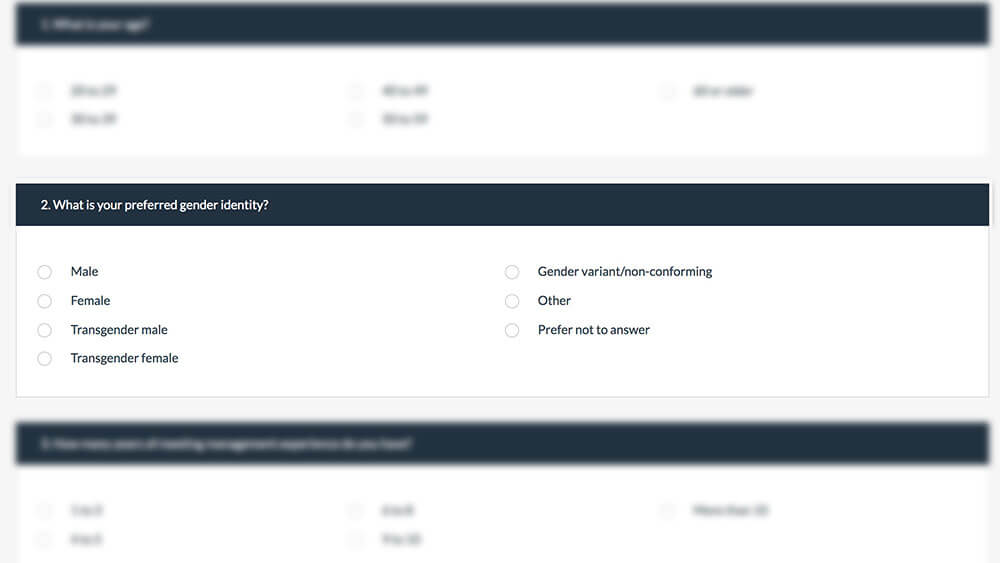When our 2019 Convene Salary Survey was initially sent out in late February, we asked respondents their gender — male or female. It’s an important question for us to ask because we use that information to highlight disparities in pay among male and female event organizer respondents. Responses also indicate whether this role continues to be filled mostly by women — usually around 90 percent of our respondents are female.
Shortly after the survey went out, we received an email from a reader who asked that we consider expanding our gender options beyond that simple binary choice. We agreed that she was right — that was certainly a more inclusive approach.
We expected that we would get some feedback — not all of it positive — when we changed the question to: “What is your preferred gender identity?” and offered respondents six choices: male, female, transgender male, transgender female, gender variant non-conforming, and “prefer not to answer.”
We did hear from readers about the question, both from those who applauded our inclusion of non-binary gender identity choices, as well as from those who let us know they didn’t like it at all.
We know that we can’t make everyone happy. And we also know that we aren’t the only ones thinking carefully about best practices around asking about sexual orientation and gender identity as part of the demographic information we collect on surveys, so we went looking for some best practices.
We found some good basic guidelines in a story posted by the online survey software company, Survey Monkey, which summarized suggestions made by experts who spoke at the 2017 Annual Meeting of the American Association of Public Opinion Researchers. It included the following two points:
- It’s okay with most people if you ask. When researchers at the U.S. Census Bureau asked respondents how they felt about answering questions about sexual identity, 90 percent said they felt comfortable and 8 percent said they were neutral.
- You should have a reason for asking. The questions are personal, “so if you aren’t planning on actually using the data, you can’t really justify asking the question,” according to the experts. In Convene’s case, we make gender-based comparisons of the average salaries earned by male and female respondents, so it made sense to be inclusive about how people identified their gender. We didn’t ask any other questions about sexual identity, because they aren’t relevant to our survey.
We already are careful about how we present the gender-related salary information collected in our Salary Survey (open for responses until March 5), because of the number of variables could skew results, including differences in the experience, education, and titles of respondents. And since the number of male respondents historically has been a small fraction compared to the number of female respondents, the sample size is too low to be statistically reliable. It’s likely that the sample size for individuals who identify as transgender will be low, as well.
But being more inclusive about how we define gender is important, even if we can’t draw firm conclusions from this particular survey. “The business-events industry is about bringing people together and it’s the ideal platform to address the issues that we face around inclusion and diversity,” PCMA President and CEO Sherrif Karamat has said. “We have a golden opportunity to lead by example through education and walking the talk.”

